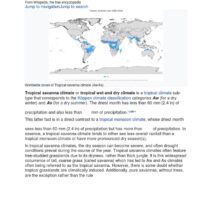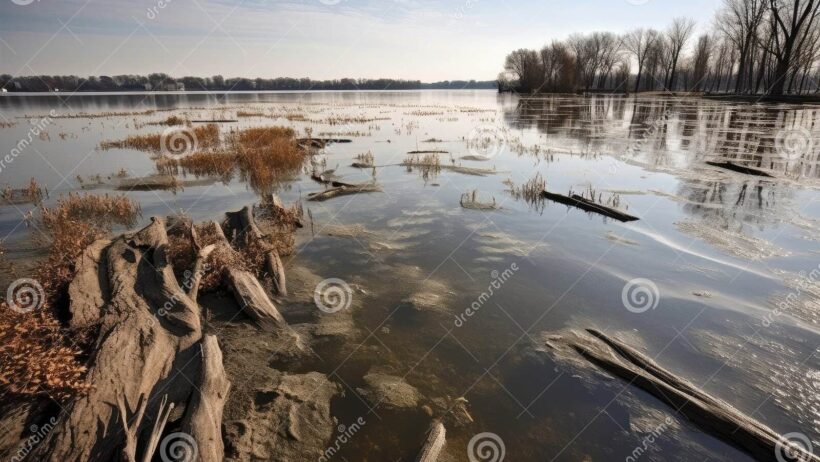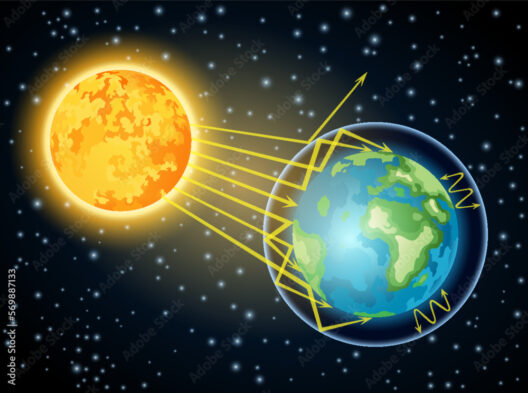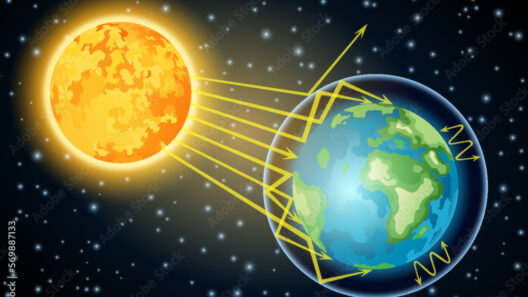Global warming, akin to a relentless thief in the night, imperceptibly transforms the landscapes and ecosystems that we hold dear. Among these precious treasures lies the Great Lakes—Huron, Michigan, Erie, Ontario, and Superior—an intricate tapestry of waterways that constitute the largest group of freshwater lakes on the planet. This vital ecosystem is not just a geological marvel; it serves as a lifeblood for countless species, human communities, and the economy at large. However, the menacing implications of global warming cast long shadows over this vital resource.
As the Earth’s temperature continues to rise, driven primarily by anthropogenic methane and carbon emissions, the Great Lakes are undergoing dramatic transformations. The idyllic settings, once characterized by vibrant fishing communities and recreational water sports, are now at the crossroads of ecological imbalance. Elevated water temperatures, altered precipitation patterns, and increasing evaporation rates are but a few factors contributing to the lakes’ metamorphosis. They are yielding a new reality that many are unprepared to face.
One of the most immediate repercussions of global warming on the Great Lakes is the rise in water temperatures. Over the past several decades, the mean surface temperature of these lakes has surged, with profound implications for aquatic life. Warmer waters can lead to the proliferation of harmful algal blooms, which not only compromise water quality but also severely affect the health of fish populations and other aquatic organisms. This is akin to welcoming a wolf into the sheepfold, where previously abundant and diverse flora and fauna now struggle to coexist.
In addition to rising temperatures, precipitation patterns have become increasingly erratic. Some regions surrounding the Great Lakes are witnessing intensified rainfall, while others experience drought conditions. This inconsistency results in more frequent and severe flooding, impacting both infrastructure and local ecosystems. Flooded areas disrupt habitat for various species, while drought can create a dry spell that leaves these habitats desolate. The interconnectedness of ecosystems underscores a fundamental truth: the health of the Great Lakes directly correlates to the health of surrounding terrestrial environments.
The cascading effects of global warming extend to the ice cover of the Great Lakes as well. Historically, ice cover in these bodies of water serves as a protective shield for aquatic ecosystems during harsh winters. However, with climate change, ice formation has diminished significantly, thereby allowing increased evaporation during warmer months. This not only exacerbates the problems of algal blooms but also alters the metabolic rates of aquatic animals. Imagine a library without books; such is the plight of fish species lacking the necessary refuge that ice cover once provided.
Moreover, the warming waters have profound implications for the fishery industry. Species such as perch and walleye, which require cooler temperatures, may find their habitats shrinking as the thermal conditions become inhospitable. Meanwhile, invasive species, such as the alewife, are thriving in these warmer waters. This imbalance poses a significant threat to local economies that depend on fishing. As the aquatic landscape changes, so too does the livelihood of communities that have flourished for generations on the shores of these lakes.
The beauty of the Great Lakes is not solely aesthetic; it is a functional ecosystem teeming with life. Many communities depend on these waters for their drinking supply, recreational activities, and tourism. The alterations induced by global warming endanger these resources. For instance, increased evaporation rates diminish water levels, which in turn may negatively affect shipping routes that are critical for trade. The stakes are exceedingly high—what was once a reservoir of life is threatened by warming trends that compel us to reevaluate our relationship with nature.
Despite the daunting challenges posed by climate change, there exists a glimmer of hope. Local and national initiatives aimed at mitigating the effects of global warming on the Great Lakes are gaining traction. Conservation programs designed to improve the health of the ecosystem focus on restoring wetlands, controlling invasive species, and enhancing habitat availability for native fish. Such initiatives advocate for a return to balance, striving to nurture the resilience inherent in nature.
Collaboration among governments, non-profit organizations, and local communities is paramount. Education and awareness campaigns can galvanize public support for initiatives aimed at preserving the Great Lakes. Collective action can shift the tide in favor of environmental stewardship. By engaging with the realities of climate change and its impact on the Great Lakes ecosystem, we can foster a sense of responsibility that transcends geographies and demography.
In conclusion, global warming indisputably influences the Great Lakes, invoking an array of ecological and socioeconomic challenges that threaten this vital ecosystem. The interplay of temperature rises, altered precipitation patterns, diminished ice cover, and shifts in fish populations paints a concerning picture. Yet, armed with knowledge and united by purpose, it is within our capacity to effect change. The Great Lakes, as resilient as they are beautiful, beckon for our attention and action. The legacy we create for future generations depends on the actions we take today. Will we stand by and witness this vital ecosystem succumb to our negligence, or will we champion its cause and safeguard its splendor for all time?








